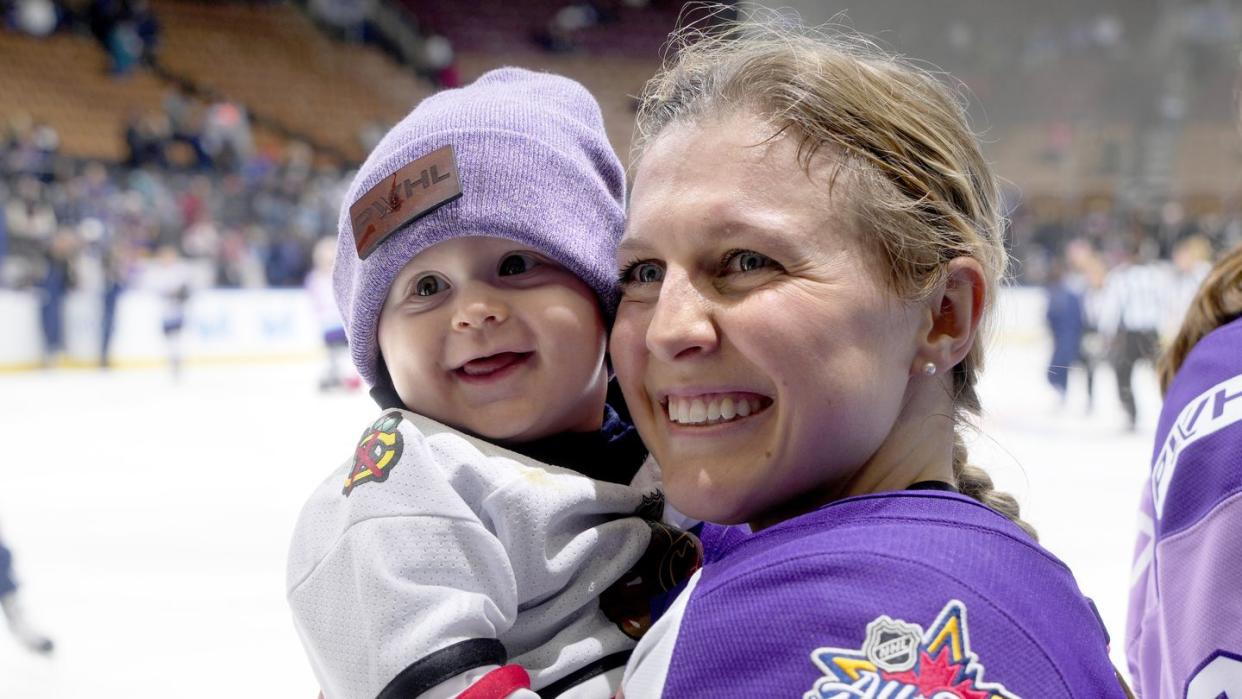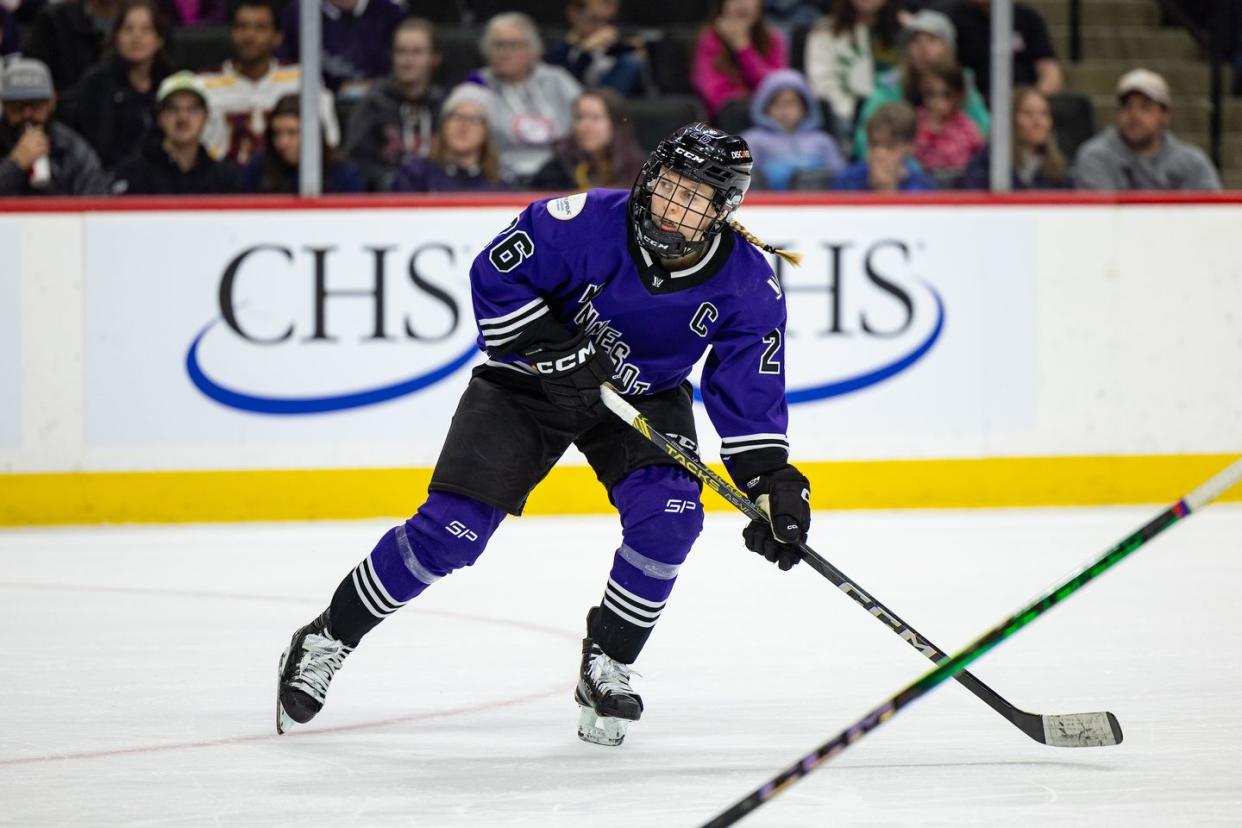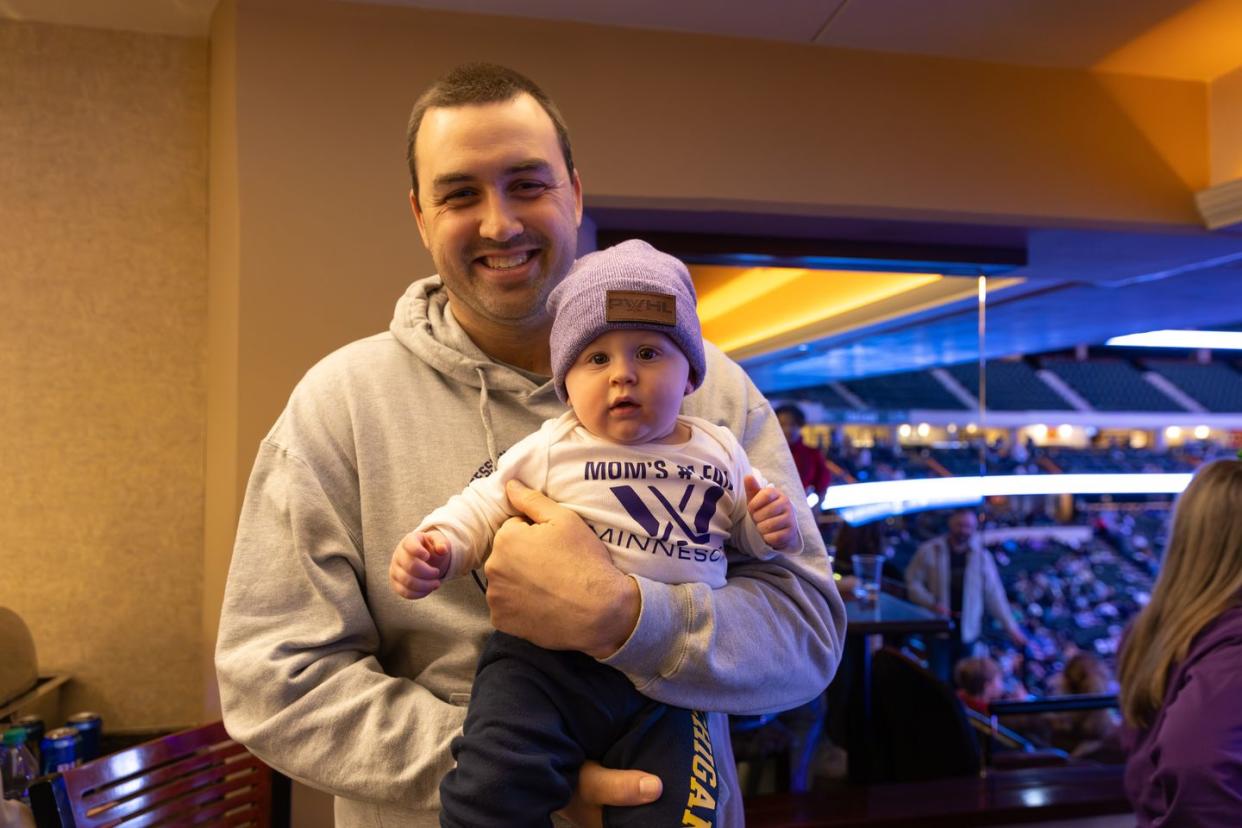This Professional Hockey Player Is On A Mission To Redefine The Term ‘Hockey Mom’

Two-time gold medal Olympian and Professional Women’s Hockey League (PWHL) player, Kendall Coyne, isn’t your average hockey mom.
The Team Minnesota captain spends her hours on the ice—not in the stands. At puck drop, she trades sippy cups for slap shots and swaps nap time for lap time. Kendall makes sure to put her all into her hockey game—and then she turns around and pours that same energy into parenting.
"So often when people think of a hockey mom, they think of the mom coming into the rink to watch her kids play," Kendall tells Women’s Health while preparing for her last regular home game of the season. "I look at being a hockey mom as redefining what a hockey mom may be. And for me, that's playing hockey with my child cheering me on."
Kendall, whose son, Drew, is now 10 months old, played through her first trimester with the Professional Women's Hockey Players Association (PWHPA) and Team USA, and continued practice skates until she was 31 weeks pregnant. She was doing workouts up until two days before she welcomed baby Drew with husband Michael Schofield, a professional football player, in July 2023. At six weeks postpartum, Kendall was cleared to get back to intense workouts. She was drafted to the PWHL in September, and took to the ice for her first game with Team Minnesota on January 3.
"It's just been so unbelievable to be able to go through this journey with my son by my side," she says. "It’s been so hard to get back to this point. By no means has it been easy, [but] he gives me so much strength and so much motivation."
As the only mom on her team, Kendall says she hopes she inspires other teammates to know they can be a mom and still play hockey. She wants women to know that you don't have to make a choice between the two.
"I never wanted [my son] to think he was the reason I would stop playing hockey," she says. "He’s the reason that I continue to play hockey and go through this journey with him, whether he remembers it or not."

Kendall's rising stardom goes beyond fan-packed arenas.
This spring, the PWHL star will make her debut as a voice actress in the newest Disney Pixar sequel, Inside Out 2. The film opens in theaters on June 14 and follows Riley, a female hockey player in her teens. Riley encounters and learns to manage her emotions, like joy, sadness, anger, and new this time around—anxiety.
"Being a professional athlete and playing sports at the highest level, there's a great deal of stress and anxiety that comes with that position," Kendall says. "And I think it's learning how to not let those emotions get the best of you, impact your play, or influence who you are on a regular basis."
Like Riley, Kendall has faced lots of emotional battles during her hockey career, both on and off the ice. Embracing and managing those emotions, which get even more complicated during pregnancy and postpartum—not to mention balancing being a mother and a hockey captain—has been the key to her success.
"As I've gotten older, and [gotten farther] in my career, I've learned to control the things I can control and let go of what I can't control,” Kendall explains. “I always say the two things that I can control each day are my attitude and my effort. When things are hard or stressful, I go back to those to ground myself."
Leadership that supports players and motherhood makes Kendall's balancing act possible.
Over the past decade, women’s sports franchises have doubled down on support for pregnant and parenting players. In 2020, FIFA granted all female soccer players worldwide a minimum of 14 weeks of parental leave at two-thirds their regular salary. That same year, the WNBA extended full salaries to league players on maternity leave, up to $5,000 annually for child care for kids under 13, and a paid-for two-bedroom apartment.
Within the PWHL, support for hockey moms looks like pumping rooms for breastfeeding players at events like the PWHL Draft, eight weeks paid maternity leave, on-the-road nanny support until a child’s first birthday, and support for players through things like housing stipends, athletic training, doctors, strength coaches, massage therapists, chiropractors, daily on-ice training and workouts, and two provided meals per day.
"[These investments] are allowing us to come to the rink and focus on our craft, focus on our team, and focus on winning a championship instead of worrying about our second or third job," Kendall says. "We also don’t have to worry about where we are going to get our skates sharpened, how we’ll get to wherever we need to go, or booking ice time."
Those struggles, when women were left to fend for themselves on and off the ice, Kendall calls "the old days." She credits Kimbra and Mark Walter, business and philanthropic leaders and private investors behind the PWHL, for their unwavering support for the league's six teams—which include three Canadian (Montréal, Toronto, Ottawa) and three U.S. (Minnesota, Boston, New York) teams.

Kendall’s 'not surprised' by the PWHL's momentous first year.
Reflecting on the league’s record-shattering inaugural season this year, Kendall’s not shy in proclaiming, "It's been a momentous year." Nearly three million fans around the globe tuned in to watch the first-ever PWHL game on January 1, where New York beat Toronto 4-0. Montréal’s face-off against Toronto nearly four months later sold out the NHL’s largest stadium, the Bell Centre, with 21,105 fans in the stands—the largest attendance for a women's hockey game...ever. And at home, Kendall’s Team Minnesota averages 6,880 spectators per game. Of course, her number one cheerleader, son Drew, is always in the crowd.
"I think we've all believed that this was possible—we always had this vision that women's hockey can be, and is, this successful," she says. "My hope for the future is that this is only going to keep getting better and better and better."
You Might Also Like
